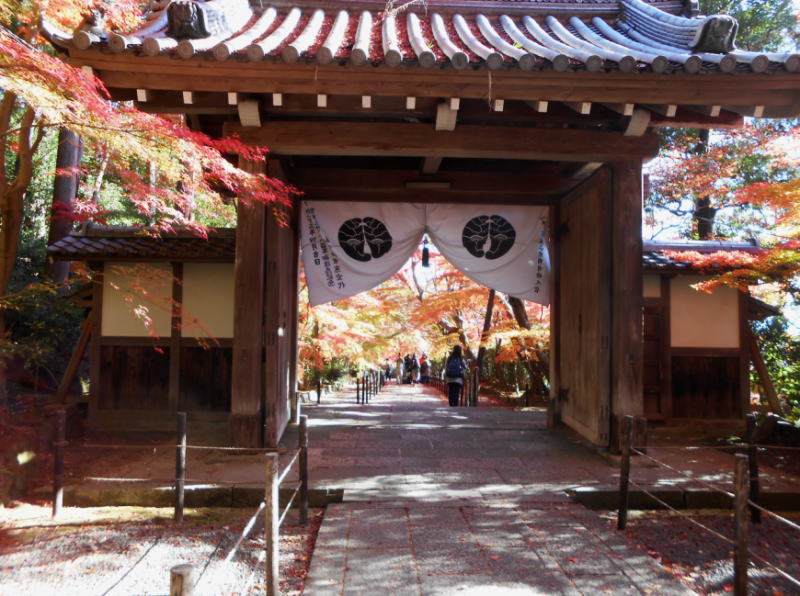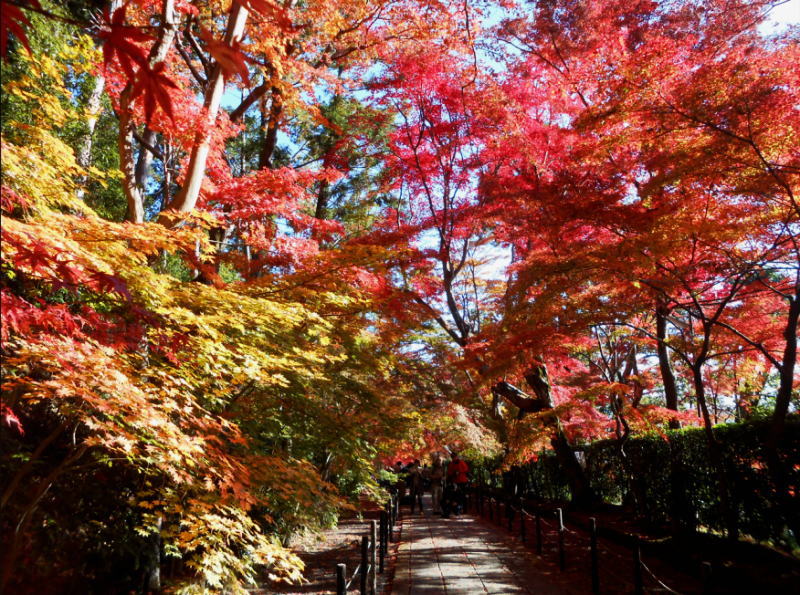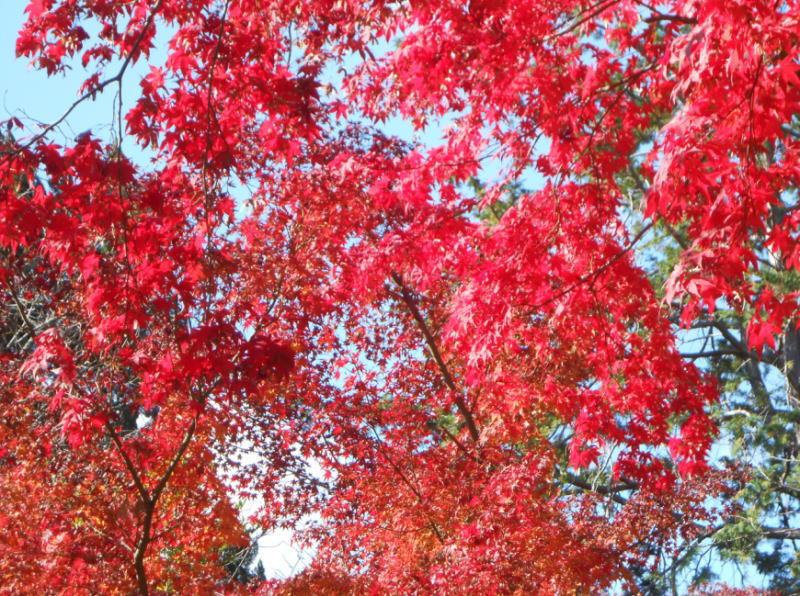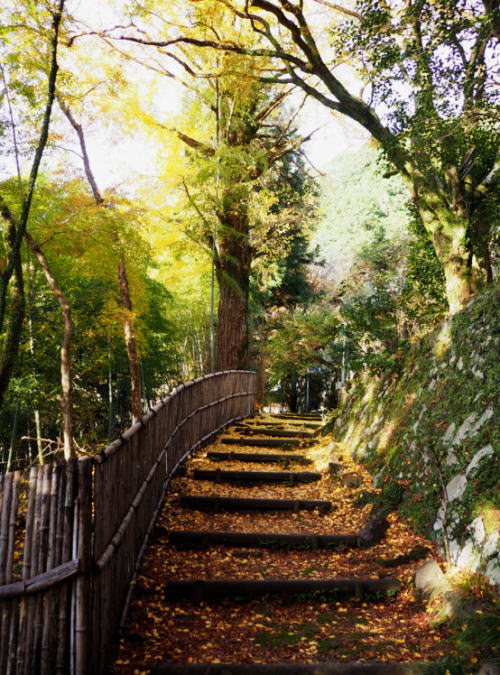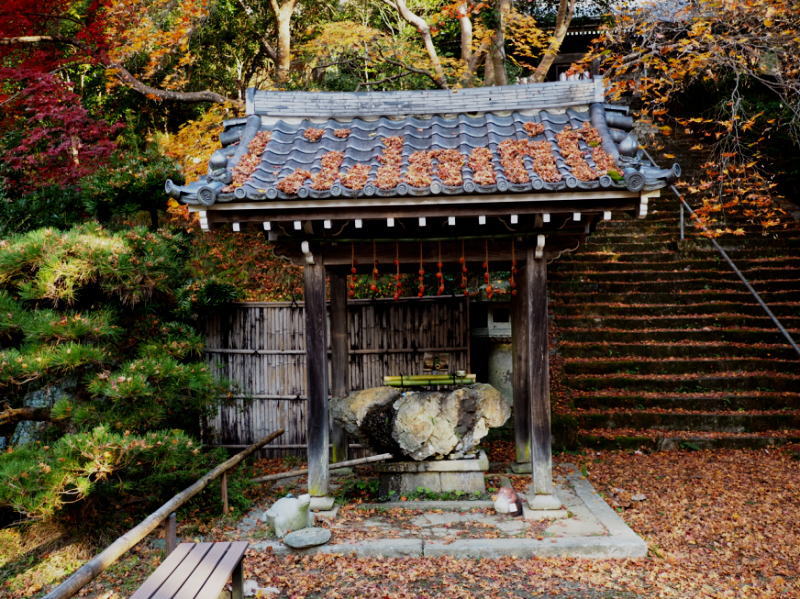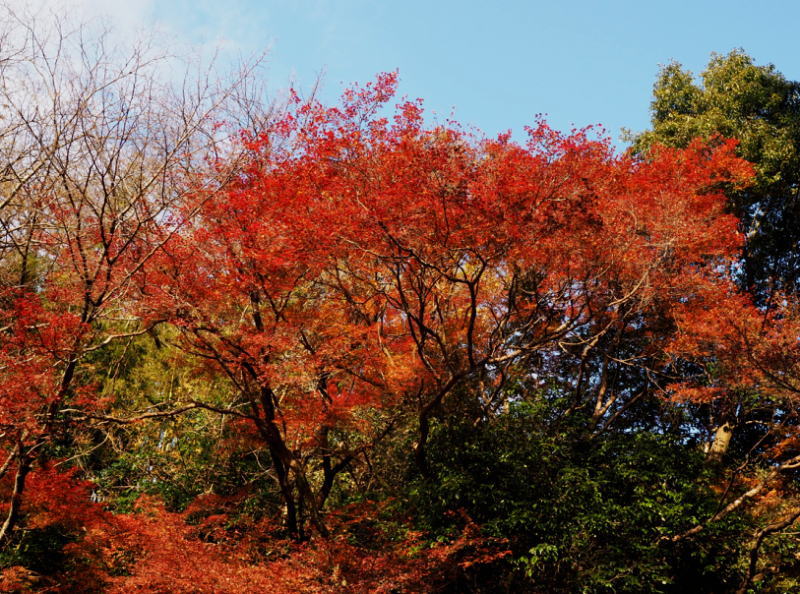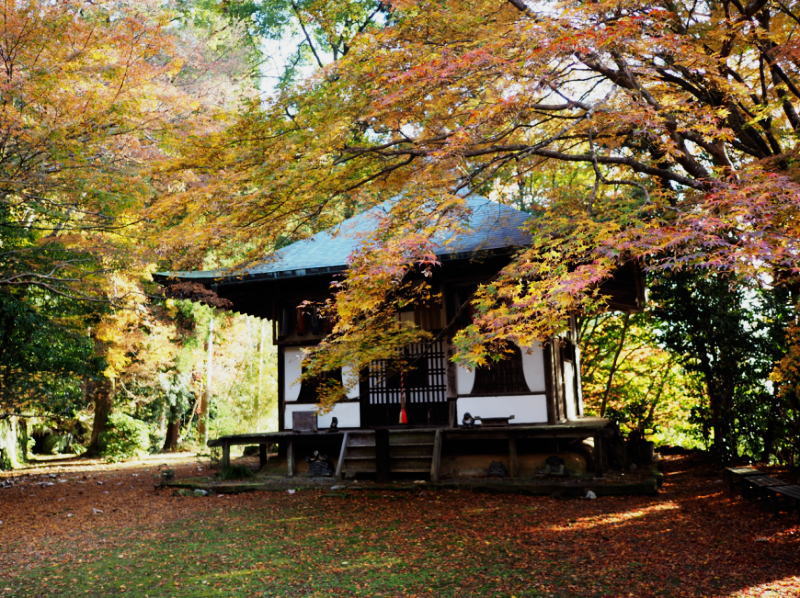善峯寺
Yoshimine Temple
A high priest named Gensan built Yoshimine Temple in 1029 and enshrined a Thousand-Hands-Kannon image, his work, as the main image in the hall. The temple has an impressive imperial-related history. In 1034, Emperor Goichijō gave the name “Yoshimine (良峯)”, designating it as a temple to spiritually guard the nation. Emperor Gosuzaku brought the temple a new Thousand-Hands-Kannon image as the new main image; Emperor Gotoba donated a plaque inscribed with the name “Yoshimine (with kanjis changed to 善峯)” in 1042, followed by donations by Emperors Shirakawa, Gohanazono and patronage by Emperors Gosaga and Gofukakusa. See here for details.
ACCESS
Kōmyōji Temple is located in Nagaoka Kyo City, Kyoto Prefecture.
JR Mukomachi Station --> Hankyu Kyoto Line Higashi Muko Station --> Hankyu Bus No. 66 --> Yoshimine Dera (善峯寺) Stop.
(www.yoshiminedera.com/)
|
金蔵寺
Konzōji Temple
Konzōji Temple is an old Tendai School temple built in 718 by Master RyŐhō following the order of Emperor Genshō. In 728, Emperor Shōmu donated the temple name plaque inscribed with “Konzōji (金蔵寺)”, and the patronage of a later emperor Kammu turned it into a prestigious temple with 48 affiliated small temples within the premises. After being burned down in the War of Ōnin (1467 to 1477), Keishōin, mother of the fifth shogun Tokugawa Tsunayoshi, rebuilt it in the Edo Period (1603 - 1867). A mountain path connecting the temple and Yoshimine Temple makes a hiking course for magnificent natural views.
ACCESS
Konzōji Temple is located in Kyoto City.
JR Kyoto Station --> Keihan Bus bound for Nagamine (長峰) --> Nagamine Terminal (長峰) Stop --> 1 hour's walk
(or)
Hankyu Higashi Muko Station or Hankyu Nagaoka Tenjin Station --> 15min-ride on taxi
|
|

